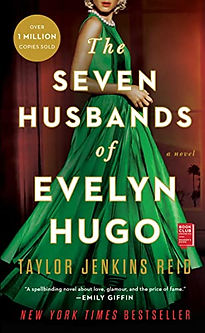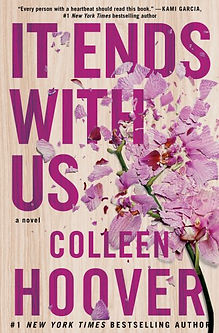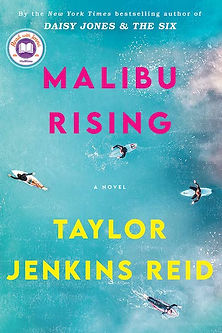
Exploring the Evolution
of Reading
Words by Sophia Sipe
By Sophia Sipe
Few things were as fun as sitting on the carpet with my mother. Thanks to child glee and giddiness, it didn't matter
that I was sitting criss-cross applesauce on a grungy carpet, no longer beige thanks to a collection of stains.
What mattered was being on that carpet meant my
mother was reading to me. Her gentle voice, strained by asthma, transported me to other worlds. Of princesses, tree houses and outer space.
It wasn’t long before the stories were coming from
my Dora the Explorer boombox, with musical backgrounds and sound effects. My mother had a tower of books on CD, kid’s books where characters like Strawberry Shortcake detailed their cartoon lives.
Eventually, Hooked on Phonics — created in 1987
and a staple by my toddler years in the early 2000s —
became one of my favorite toys, doubling as a learning
program. It unveiled a world where Laura’s little house on the prairie was my home and Junie B. Jones became my best pal.
So by the time I got to elementary school in the Central Valley, holding the book catalog by Scholastic was like Christmas at my fingertips. Every academic season, we were allowed to shop for imagination in a catalog plastered with popular series and rainbow colors. We were being raised as bookworms, seized by adventure and creativity.
The culture of reading seemed to perfectly blend the
fantastical with the practical, teaching children how to
read and develop a habitual use of books, while percolating our sense of inventiveness and originality.
Eventually, the universe we once inhabited with our
minds would be altered. A threat to the culture of reading was growing and would forever transform our relationship with stories and fantasies. That threat was the internet.
In spite of the efficiency and swiftness of the internet, Las Positas English professor and writer, Martin Nash, pushes for his students to maintain reading and writing skills.
“(Reading) is necessary for the communications that
keep us human,” Nash said.
From buying novels off of book orders to #BookTok, a reader-oriented group in the TikTok app, modern youth have rekindled their relationship with reading through their digital addiction.
Though its existence can be traced back to 3500 B.C., reading significantly declined throughout the 2000s compared to the 20th century, according to “The New Yorker”. Hobbies have changed as America swapped its reading glasses for Netflix subscriptions and social media accounts.
With the prevalence of short and speedy content following a decline in consumers’ attention spans, the nature of literature has gradually changed. In turn, fictional novels have shied away from long-form slow burners to rapid page-turners.
Through apps like TikTok, viewers can discover authors like Colleen Hoover and Holly Black without the burden of papyrus and bookshelves. BookTok is one of the many offspring of the reading revival, with movements like its push for daily reading leading a generation toward intellectual growth.
“I've noticed that with the internet — that whole headline phenomenon: you know, where people are trying to get clicks — writers are trying to get people's attention more quickly,” Nash said.
“So I think that the way we read has evolved as well, at least in my experience. I think in our day and age (reading has) kind of evolved to become more immediately captivating.”







Accessibility to electronics, paired with such headline phenomena, has put reading at risk. The National Endowment for the Arts concluded that the percentage of adult Americans reading literature dropped over 10 percent between 1982 and 2002.
Though this drop has affected nearly all Americans, “the steepest decline in literary reading is in the youngest age groups.” The survey attributes this to the insurgence of non-reading media such as television, the internet and web apps.
The National Endowment for the Arts stated, “The trends among younger adults warrant special concern, suggesting that –– unless some effective solution is found –– literary culture, and literacy in general, will continue to worsen. Indeed, at the current rate of loss, literary reading as a leisure activity will virtually disappear in half a century.”
In the words of LPC professor and published author Nolan Higdon, “To read well is to think well.”
Though with #Booktok garnering over 103.4 billion views, print book sales and the publishing industry are being brought back to life.
The notoriety surrounding up-and-coming cult favorites inadvertently affects big-name retailers like Barnes and Noble.
“BookTok gets excited about it, the retailers pay attention, merchandise it, other people find it, other retailers start to find it because the numbers start to go up, and it takes off,” NPD BookScan executive director Kristen McLean said.
According to Forbes, readers bought 825 million copies of print books in the U.S. in 2021, leading to an increase in the book market of 9% since 2020. McLean attributes this rise to TikTok, specifically due to the popularity of #BookTok.
“It starts with BookTok, and then it just ripples out
from there,” McLean said.
While book influencers have played a massive role in shaping the market, at the root of the community, above all else, is connection.
“Without reading, we don't really know each other
more than, you know, what we see on TV or in the
news,” Nash said.
He continued, “In a broader sense, (reading and writing) just allows us to interact with many more people than we would, obviously, if we didn't have a way of reaching them.”
It took me a while to reach the same discovery. But first grade was a start. I would often be asked by the teacher to read to my peers and sound out letters they struggled with. Every time we lined up in a reading circle alongside Mrs.Campbell, I sat in anticipation of finishing each chapter book. I couldn’t wait until I learned how the story ended. I couldn’t wait for another to begin.
It’s easy to forget that feeling. The feeling of curiosity eating at your stomach after finishing the first “Fablehaven.” The feeling of the world opening up for the first time.
Most of us learned early on that the pages are a portal to a world of difference. A place where pens became wands and stuffed animals became friends.
It all started with stringing vowels together, with simple communication from author to reader.
While social media breeds a different form, it exists
for a similar purpose.
It’s a way for adults to connect with the magic of words. A way to get back to the domain we once ran as kids.
So the next time you sit down, feet tucked under blankets and pillows beneath your head, remember those moments. It may lead you to a pathway back there. And when you discover that that’s what you’ve been missing — explore.




